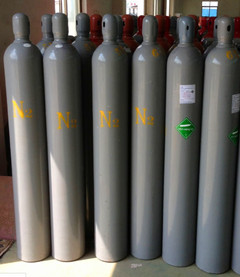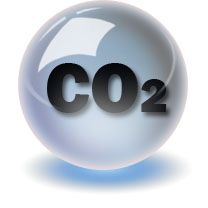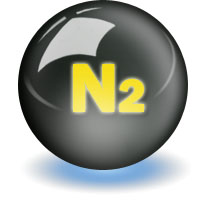联系粤佳
广州市谱源气体有限公司


安全知识-Gaseous Oxygen氧气
2008-8-23 11:49:00 [点击下载:2008823113027717.doc]
Oxygen is the second largest component of the atmosphere, comprising 20.8% by volume. Gaseous oxygen is colorless, odorless, tasteless, and nonflammable. Oxygen is necessary to support life. It is a strong oxidizer that combines readily with many elements to form an oxide and is necessary to support combustion.
氧是空气的第二大组成成分,体积占20.8%。气态氧无色,无嗅,无味,不可燃。氧是维持生命的必要元素。氧是一种强氧化剂,很容易同许多元素反应,生成氧化物。氧还是维持燃烧的必需品。
Oxygen will react with nearly all organic materials and metals. Materials that burn easily in air will burn more vigorously in oxygen. Equipment used in oxygen service must meet stringent cleaning requirements; any system must be constructed of materials that have high ignition temperatures and which are nonreactive with oxygen under the service conditions. Vessels should be manufactured to American Society of Mechanical Engineers (ASME) codes and designed to withstand the temperatures and pressures involved.
氧几乎同所有的有机材料和金属发生反应。在空气中容易燃烧的材料在氧气中会燃烧的更加剧烈。氧气设施中使用的设备必须满足严格的清洁要求;系统必须采用具有高点火温度且在使用条件下同氧不反应的材料建造。容器的制造要满足美国机械工程师协会(ASME)的标准,容器的设计要使之能经受住有关的温度和压力。
Manufacture生产
Oxygen is produced by an air separation unit(ASU) through the liquefaction of atmospheric air and separation of the oxygen by continuous cryogenic distillation. The oxygen is then removed and stored as a cryogenic liquid. Oxygen can also be produced noncryogenically using selective adsorption processes to produce gaseous product.
氧的生产使用空气分离装置(ASU),通过大气的液化和连续低温蒸馏分离出氧。随后,氧以低温液体的状态搬运和储存。氧的生产还可以不采用低温的方法,而是采用选择性吸附过程来生产气体产物。
The ASU manufacturing process begins with a main air compressor and ends at the output of the product storage tanks. Air is compressed and sent through a clean-up system where moisture, carbon dioxide, and hydrocarbons are removed. The air then passes through heat exchangers where it is cooled to cryogenic temperature. Next, the air enters a high pressure distillation column where it is physically separated into a vaporous form of nitrogen at the top of the column and a liquid form of “crude” oxygen (~90% O2) at the bottom.
ASU生产过程从一个主气流压缩机开始,产品储存罐的输出后结束。空气通过一个去除了水蒸汽、二氧化碳和碳氢化合物的清洁系统压缩和输运。接着空气通过热交换器冷却到低温。随后空气进入高压分裂蒸馏塔,分离成氮蒸气和“原始”液氧(含大约90%的氧),氮蒸气在蒸馏塔顶部,液氧在蒸馏塔底部。







